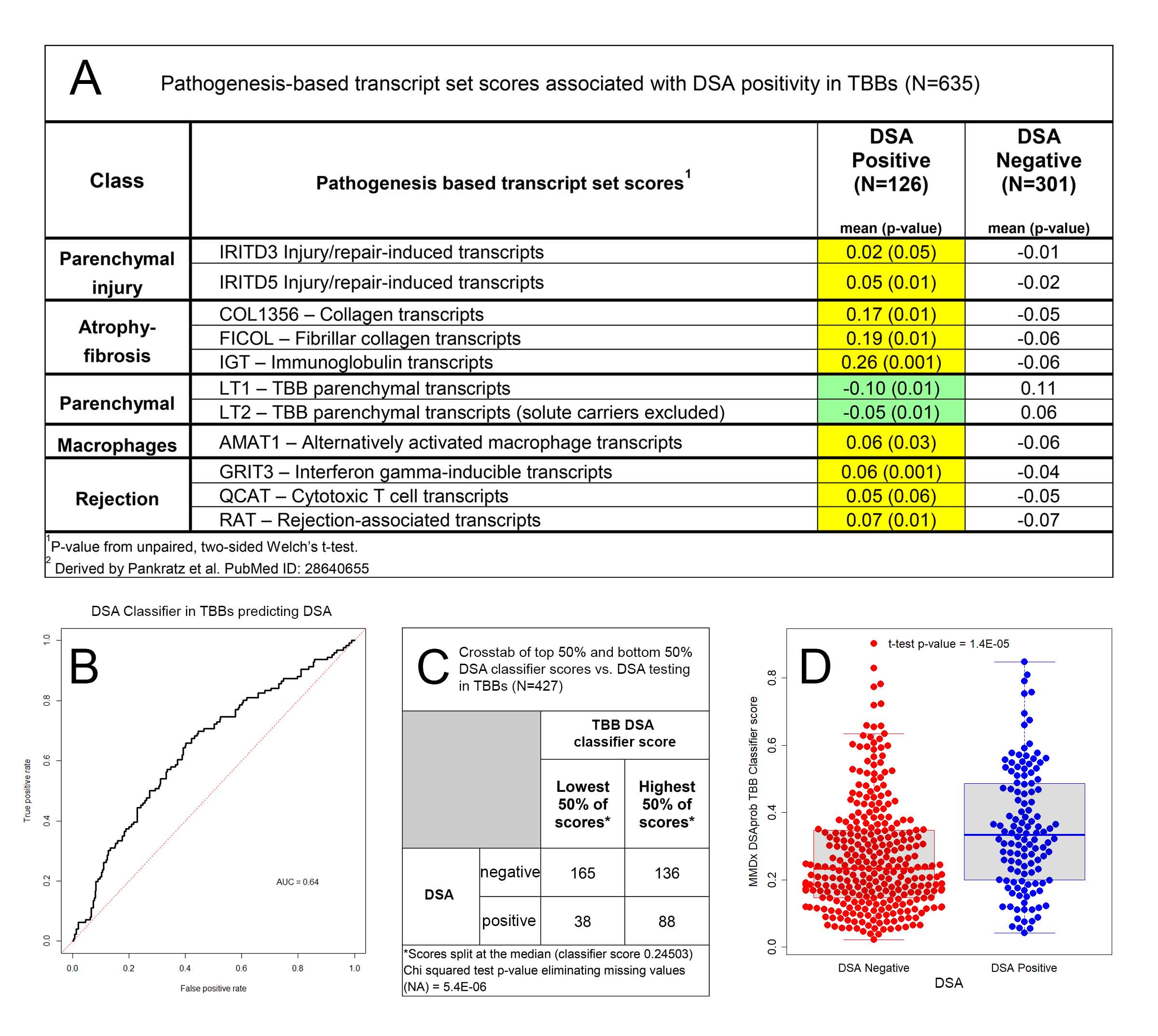A Molecular Classifier Identifies Antibody-Mediated Rejection-Associated Changes in Lung Transplant Biopsies
K. S. Madill-Thomsen1, K. M. Halloran2, M. Parkes1, P. F. Halloran1, &. the INTERLUNG Study Group3
1Alberta Transplant Applied Genomics Centre, Edmonton, AB, Canada, 2University of Alberta, Edmonton, AB, Canada, 3., ., AB, Canada
Meeting: 2021 American Transplant Congress
Abstract number: 91
Keywords: Alloantibodies, Endothelial activation, Gene expression, Lung transplantation
Topic: Clinical Science » Lung » Lung: All Topics
Session Information
Session Name: How to Expect the Unexpected- Incorporating Predictors into Lung Transplant Decision Making
Session Type: Rapid Fire Oral Abstract
Date: Saturday, June 5, 2021
Session Time: 6:00pm-7:00pm
 Presentation Time: 6:00pm-6:05pm
Presentation Time: 6:00pm-6:05pm
Location: Virtual
*Purpose: Identifying lung transplant antibody-mediated rejection (ABMR) has been controversial. We compared gene expression in donor-specific antibody (DSA) positive vs. DSA negative lung transbronchial biopsies (TBBs) to determine if DSA was associated with molecular changes similar to those in rejecting kidney and heart transplant biopsies.
*Methods: Biopsies were prospectively collected from 10 international centers in the INTERLUNG study: 635 TBBs from 532 patients and 348 third-bifurcation mucosal biopsies (3BMBs) from 307 patients. A machine learning classifier for predicting DSA positivity was trained on DSA in TBBs; scores were represented as the median of 12 estimates.
*Results: Of 635 TBBs, 427 were DSA tested: 126 DSA positive (median 276 days post-transplant), and 301 DSA negative (median 303 days post-transplant). In TBBs, DSA was associated with increased expression of transcript sets representing inflammation, parenchymal dedifferentiation, and atrophy-fibrosis (Figure 1A). Transcripts increased in DSA positive TBBs included many interferon gamma (IFNG)-inducible transcripts increased in rejecting hearts and kidneys: CXCL9/10/11, IL18BP, PLA1A, SLAMF8, APOL6, HLA-DQA1, and HLA-DPB1. Transcripts associated with NK cells were not increased (e.g. KLRD1, GNY, and PRF1). A DSA probability classifier developed in TBBs predicted DSA positivity (AUC=0.64, Figure 1B). High classifier scores were strongly associated with DSA positivity in a chi-squared test (Figure 1C, p=5.4E-06) and t-test (p=1.4E-05, Figure 1D). Classifier scores were increased overall in DSA positive biopsies (Figure 1D). DSA probability classifiers developed in transplanted hearts and kidneys predicted DSA positivity in TBBs (AUC=0.60 and AUC=0.57, respectively). Many transcripts increased in DSA positive TBBs were also significantly associated with the TBB DSA classifier scores. Similar approaches in 3BMBs with available DSA testing results showed weaker signals for DSA positivity than in TBBs. There was no strong association of DSA with CLAD.
*Conclusions: DSA positivity is associated with IFNG-induced and injury-related transcripts and transcript sets. DSA positivity can be used to derive a molecular classifier that identifies TBBs with antibody-mediated rejection-associated changes similar to those seen in transplanted hearts and kidneys. The functional and prognostic significance of lung ABMR changes can now be explored.
To cite this abstract in AMA style:
Madill-Thomsen KS, Halloran KM, Parkes M, Halloran PF. A Molecular Classifier Identifies Antibody-Mediated Rejection-Associated Changes in Lung Transplant Biopsies [abstract]. Am J Transplant. 2021; 21 (suppl 3). https://atcmeetingabstracts.com/abstract/a-molecular-classifier-identifies-antibody-mediated-rejection-associated-changes-in-lung-transplant-biopsies/. Accessed December 24, 2025.« Back to 2021 American Transplant Congress

